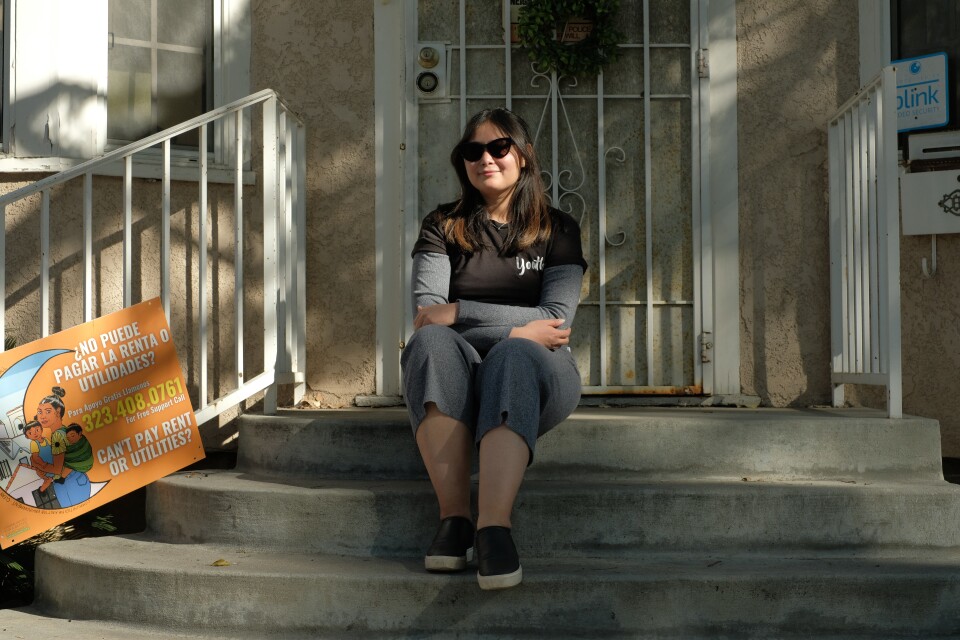Truth matters. Community matters. Your support makes both possible. LAist is one of the few places where news remains independent and free from political and corporate influence. Stand up for truth and for LAist. Make your year-end tax-deductible gift now.
'Inflation Reduction Act' Would Help LA’s Hardest Hit Climate Communities

If signed into law, the Democrats’ climate, health and tax bill — called the Inflation Reduction Act— will be the largest single investment in U.S. history to address the climate crisis. That means a lot more money for cities and states to deal with the issue.
The bill dedicates nearly $370 billion to everything from larger tax incentives to expand solar and wind power, to more rebates for low- and moderate-income Americans for electric vehicles and making homes more energy-efficient.
From that, more than $6 billion would go to communities across the nation that have dealt with the worst impacts of our reliance on fossil fuels—the biggest cause of the climate crisis—such as port cities and neighborhoods inundated with oil wells.
For example, in L.A. port communities such as Wilmington, funding could go towards tree planting, community-led air monitoring, and zero-emissions heavy-duty trucks.
“This is much needed funding for those homes and communities that need it most,” said Michael Méndez, a professor at UC Irvine whose research focuses on the intersection of the climate crisis, public health and environmental justice. “This legislation is definitely groundbreaking in terms of climate change action and putting a stronger focus on low-income communities and communities of color.”

Méndez said the the bill takes a multi-pronged approach, not only focusing on reducing overall emissions, but also improving local air quality and infrastructure in communities that are under-resourced and overburdened by pollution.
“It represents an opportunity to rethink how we build and manage our cities, towns and states,” Méndez said.
He said he’s particularly pleased with grants to help upgrade roads, buildings and green space in low-income communities to build resilience in the face of extreme weather events such as worsening heat and storms.
“It helps ensure that these communities are not left behind as the frequency and severity of such impacts are occurring year after year,” Méndez said.
The L.A. Department of Water and Power is also keeping a close eye on the federal funding to help with initiatives such as tree planting in the hottest neighborhoods and water conservation, for example.
The legislation is expected to help lower utility bills and create thousands of jobs. L.A. is already a center of clean-technology innovation, and expecting exponential growth in green jobs.
While more funding is a win, Jonathan Parfrey, founder of local non-profit Climate Resolve and former L.A. Department of Water and Power commissioner, said California is, comparatively and adjusted for scale, investing far more in climate action.
The 2022 California climate budget stands at $47 billion—more than what the federal government could distribute to the state taking into account its population through this legislation, Parfrey said.
“California is taking care of itself,” Parfrey said. “We're glad to see some federal action, but as we can see from the scale of it, we need far more resources to help the United States in its transition off of fossil fuels.”

Fundamentally, the Inflation Reduction Act uses tax incentives in the form of credits and deductions to increase demand for renewable energy and investments in clean infrastructure. Experts say such investment in renewable energy is a long-term solution for balancing out spiking energy prices, like we’re currently experiencing at the gas pump.
The legislation is not only expected to reduce costs for individuals, it’s expected to cut U.S. greenhouse gas emissions by 40% of 2005 emissions by 2030. While it’s a downsized version of President Joe Biden’s original climate proposal, most advocates agree it’s a major step in the right direction. However, some environmental groups oppose the bill because it could mandate more federal oil and gas leases and has large investments in the controversial technologies of carbon capture and hydrogen.
No Republicans voted to pass the bill. The House is scheduled to vote on the bill Friday. If it passes, it will go to Biden’s desk to be signed into law. You can read the full bill here.
Here are some more specifics on the funding particularly relevant to southern Californians:
- $6 billion for states and local governments to improve infrastructure, support community-led emissions monitoring and local air quality initiatives in under resourced and, specifically, port communities.
- $4,000 tax credits for buying used electric cars, a first for the federal government, which has previously only offered credits for new electric vehicles.
- $4.3 billion in rebates for making homes more energy efficient and less reliant on fossil fuels — for example, switching out gas-fueled heaters for electric heat pumps.
- $27 billion to establish a national “green bank,” which could lend money for clean energy projects such as community and rooftop solar (L.A. is in the process of establishing a public bank).
- $1,500-a-ton fee that oil and gas companies would have to pay for methane leaks. The legislation also updates fossil fuel royalty rates on federal land, which hadn’t been updated in a century. The rates will go from 12.5 percent to at least 16.6 percent of the value of fossil fuels extracted.
- $1 billion for electric school and transit buses and electric garbage trucks.
- $4 billion to address drought, particularly the stretched-thin Colorado River, which supplies water to L.A. and many surrounding cities. That funding could go to such things as paying farmers or water districts to fallow agricultural land, install more efficient irrigation systems or further incentives in urban areas to remove lawns or invest in other water-saving initiatives such as water recycling.
- $2 billion to reduce the risk of wildfire, including $200 million for nature-based solutions.
- $20 billion for climate-smart agriculture practices, such as reducing water use, improving soil health and conservation on working landscapes.








